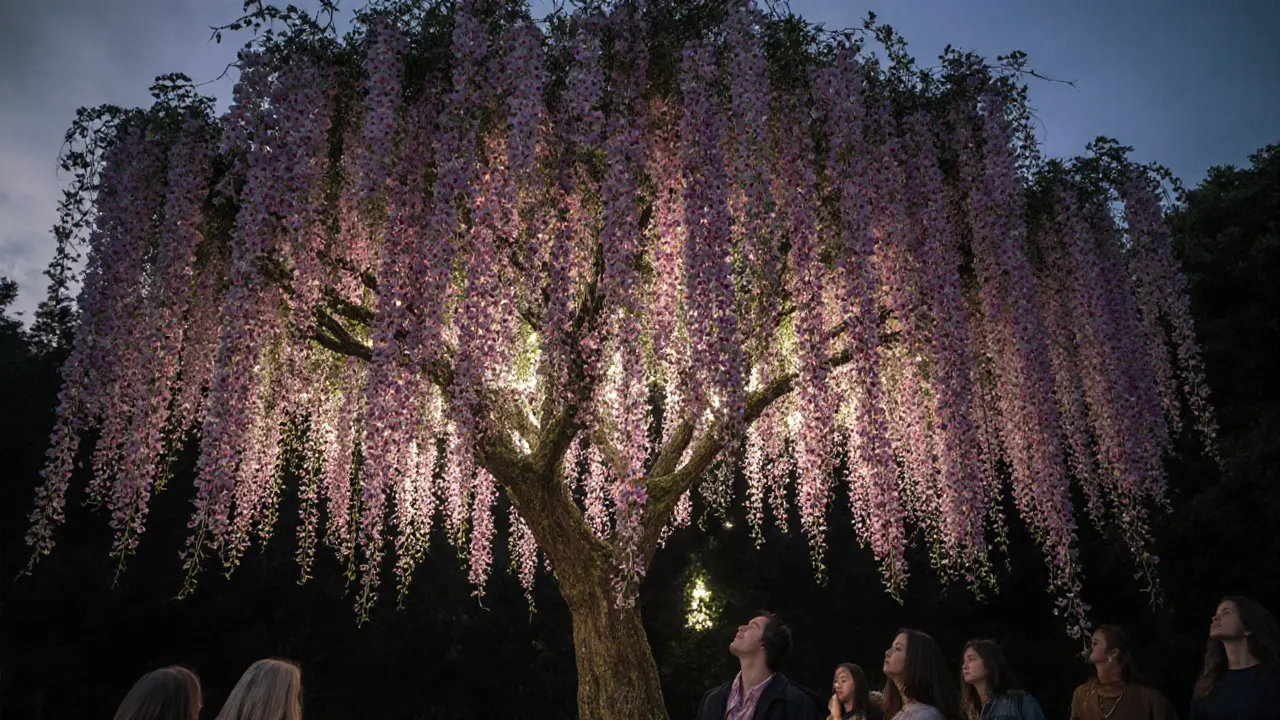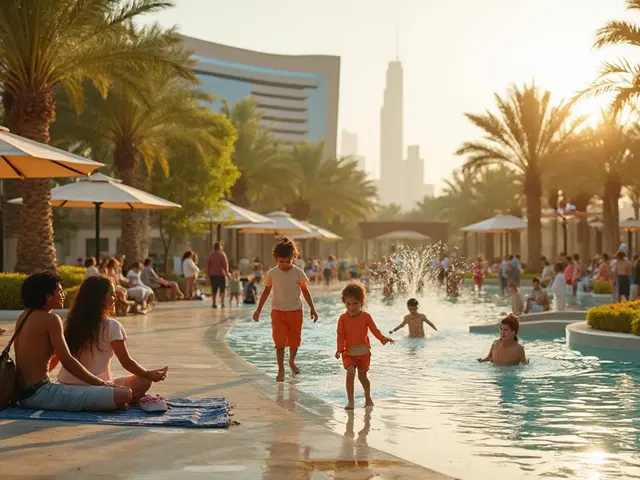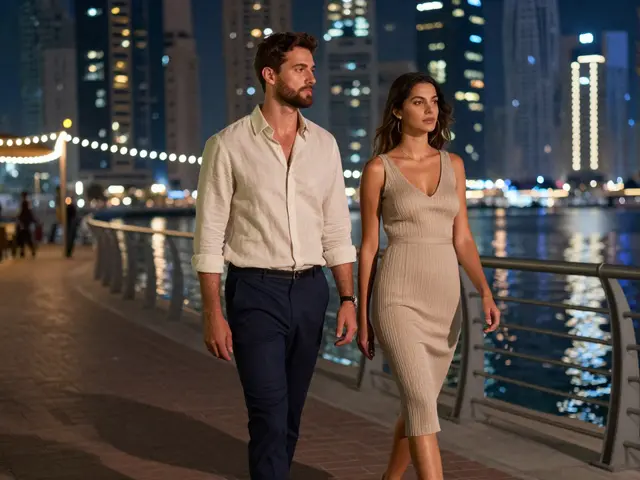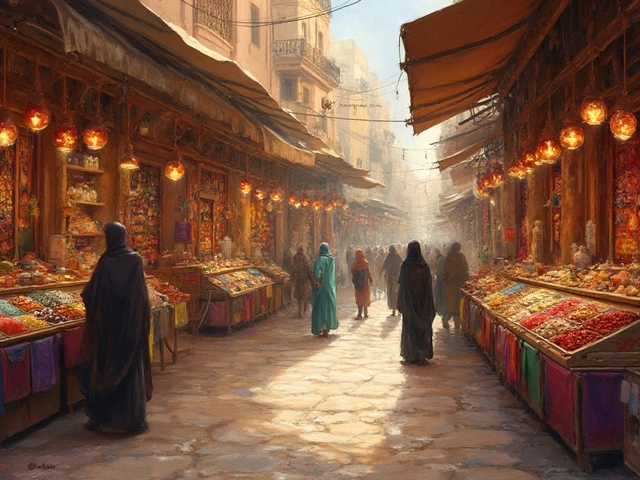
Dubai Miracle Garden isn’t just a garden. It’s a living sculpture park made entirely of flowers-over 150 million of them. Every year, it reimagines itself with new shapes, colors, and stories, turning simple petals into castles, airplanes, and even giant Disney characters. The magic isn’t accidental. It’s the result of years of planning, engineering, and a deep understanding of how plants behave under extreme heat and sun.
How Flowers Become Sculptures
At first glance, the giant heart made of red geraniums or the 18-meter-tall butterfly made of marigolds looks like something out of a fairy tale. But behind each shape is a steel frame, carefully designed to support tons of living plants. The team starts with sketches, then builds wire skeletons that mimic the final form. Each frame gets covered in planting pockets filled with soil and drainage layers. Then comes the planting: workers place individual seedlings by hand, often working in shifts before sunrise to avoid the midday heat.
Not every flower works here. The garden only uses species that can survive temperatures above 45°C and thrive with minimal water. Geraniums, petunias, and marigolds dominate because they bloom nonstop for months. They’re also dense enough to hide the structure underneath. A single flower wall might use 10,000 plants-each one placed to create a seamless color gradient. One mistake in placement, and the whole image looks patchy.
The Role of Seasonal Cycles
Dubai’s climate doesn’t allow for year-round blooms. So the garden operates on a strict seasonal calendar. It opens every November, right after the summer heat breaks, and closes in late March when temperatures start climbing again. During those four months, the garden is alive. But for the rest of the year, it’s dismantled. The soil is replaced. The frames are cleaned. The plants are composted and recycled.
This isn’t waste-it’s part of the design. The team rotates flower varieties each season to keep the experience fresh. Last year’s dragon made of blue salvia gave way to this year’s space shuttle built with white alyssum and purple lobelia. Even the pathways change. One season, they’re lined with cascading yellow daisies. The next, with red and pink begonias arranged in wave patterns.
Engineering Against the Desert
Water is scarce in Dubai. So the garden uses a closed-loop drip irrigation system that recycles 95% of its water. Pipes run beneath every planting bed, delivering moisture directly to roots. Sensors monitor soil moisture in real time, adjusting flow based on humidity and wind. The system uses less water than a single residential lawn in the U.S., yet supports millions of plants.
Shade nets are another hidden tool. They’re not decorative-they’re functional. Installed above high-traffic areas, they reduce surface temperatures by up to 10°C. That’s the difference between flowers lasting three days or three weeks. Even the soil is custom-made: a mix of coconut coir, sand, and organic compost that holds moisture without rotting roots.

Designing for Emotion, Not Just Beauty
The garden doesn’t just aim to impress. It aims to move people. The designers study how visitors move through space. Where do people pause? Where do they take photos? That’s why the giant umbrella made of 300,000 pink flowers sits at the end of a long, curved path-it’s a reveal. You don’t see it until you’re right in front of it. The same goes for the replica of the Dubai Frame: it’s placed so you can stand between its two towers and feel like you’re inside the structure itself.
Even the lighting is intentional. At dusk, LED strips hidden in the stems glow softly, turning flowers into lanterns. No spotlights. No flashy effects. Just enough light to let the colors breathe. This isn’t a theme park. It’s a slow, quiet experience meant to be felt, not just seen.
Who Designs These Masterpieces?
The creative team behind the garden includes landscape architects, horticulturists, and former set designers from film studios. Many started in traditional gardening. But here, they had to learn how to think like sculptors. One designer, who used to work on Broadway stage sets, now spends months building a 20-meter-tall castle out of petunias. Another, trained in botany, tracks bloom cycles down to the day so the roses on the clock face open exactly when the hour strikes.
There’s no formal school for this. Skills are passed down through hands-on work. New hires spend their first month planting by hand under supervision. Only then do they get to sketch their own designs. The most successful ideas come from people who understand both nature and illusion.

Why It Matters Beyond Tourism
Dubai Miracle Garden proves that beauty can grow in the harshest places. It’s not just a tourist attraction-it’s a statement. In a city known for skyscrapers and artificial islands, this garden says: we can create life where there was none. It’s a quiet rebellion against the idea that progress means replacing nature with concrete.
It also changed how people in the Gulf think about public spaces. Before this garden, outdoor areas were mostly paved or filled with plastic plants. Now, cities across the region are investing in real floral displays. Abu Dhabi built a similar garden. Riyadh is planning one. The garden didn’t just attract visitors-it inspired a movement.
What You’ll See This Season
This year’s theme is "Journey Through Time." You’ll walk through a giant hourglass made of 2 million yellow and orange flowers, with sand flowing from top to bottom. There’s a 12-meter-tall clock with moving hands built entirely of roses and daisies. A replica of the Egyptian pyramids, made from 400,000 geraniums, sits beside a 15-meter-tall Egyptian queen sculpted from purple lobelia and white alyssum.
The most surprising feature? A 10-meter-tall tree made of 120,000 hanging orchids. Each petal is hand-placed to mimic natural branching. Visitors can walk underneath it, feeling like they’re in a forest that never existed before.
How to Visit Without the Crowds
If you want the garden to feel magical, not chaotic, go on a weekday morning. The gates open at 9 a.m., and the first two hours are quiet. The light is soft, the air is cool, and the flowers look their best. Weekends, especially after 2 p.m., get packed. Families, tour groups, and influencers flood the pathways. The photo spots-like the heart and the butterfly-become bottlenecks.
Bring water. Wear a hat. And don’t rush. This isn’t a place to check off a list. It’s a place to sit on a bench, watch a bee move from one petal to the next, and realize that something this big, this beautiful, and this temporary was made by human hands.
When is Dubai Miracle Garden open each year?
The garden opens every November after the summer heat ends and closes in late March when temperatures rise above 40°C. It’s only open during the cooler months, making it a seasonal attraction rather than a year-round destination.
How many flowers are in Dubai Miracle Garden?
The garden uses over 150 million flowers each season. The exact number changes yearly based on the theme, but it’s always in the range of 150-160 million plants, mostly geraniums, marigolds, petunias, and begonias.
Are the floral sculptures real plants or artificial?
Every sculpture is made of real, living plants. Steel frames provide structure, but every surface is covered in soil and planted with live seedlings. The flowers bloom and fade naturally-there are no plastic or silk replacements.
How do they keep the flowers alive in Dubai’s heat?
A closed-loop drip irrigation system recycles 95% of water, delivering moisture directly to roots. Soil is specially blended for drainage and moisture retention. Shade nets reduce surface temperatures, and planting happens early in the morning to avoid heat stress. Only heat-tolerant species like geraniums and marigolds are used.
Can you buy flowers from Dubai Miracle Garden?
No, the flowers are not sold. After the season ends, all plants are composted and reused in the soil mix for the next year. The garden’s focus is on temporary art, not retail. But nearby nurseries sell similar heat-tolerant flowers for home gardens.



